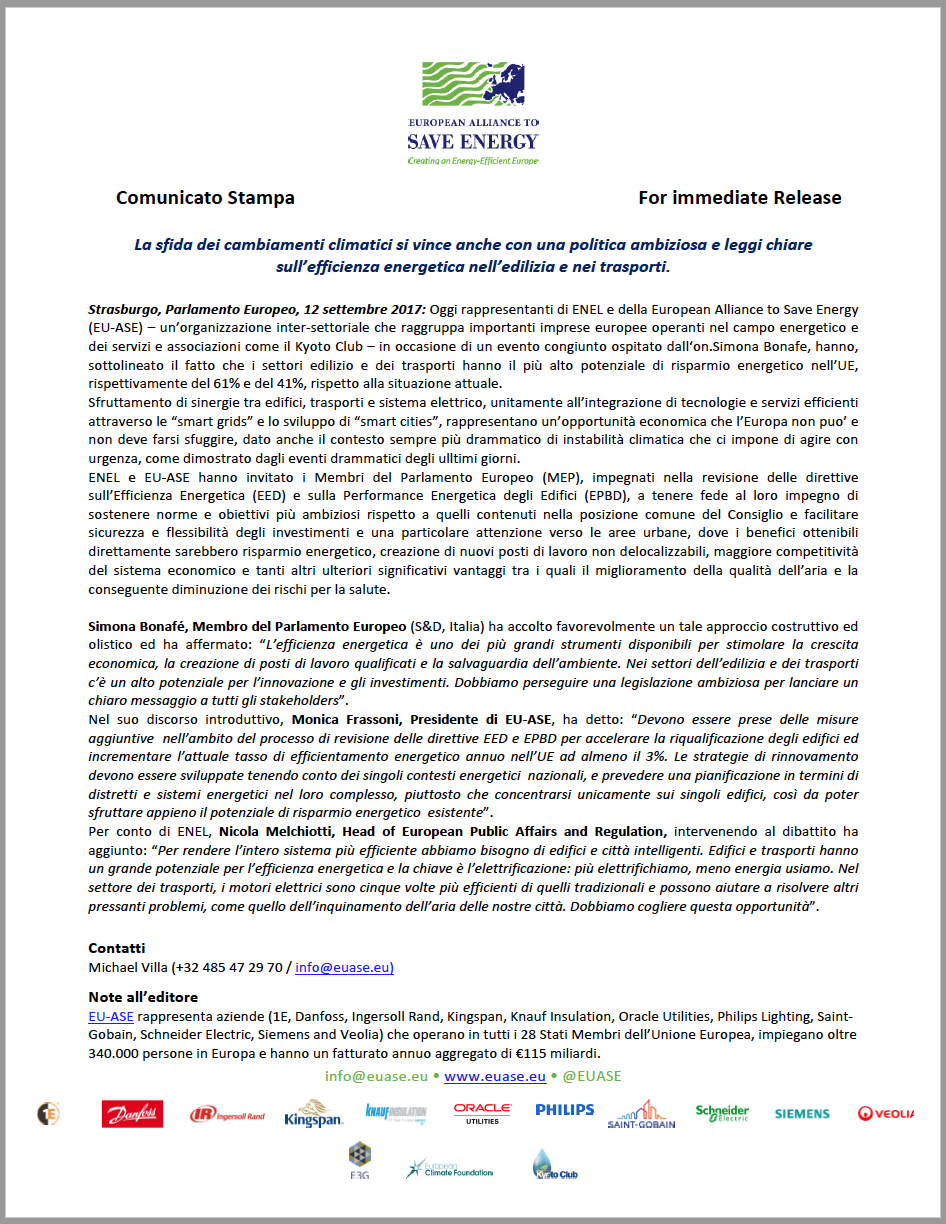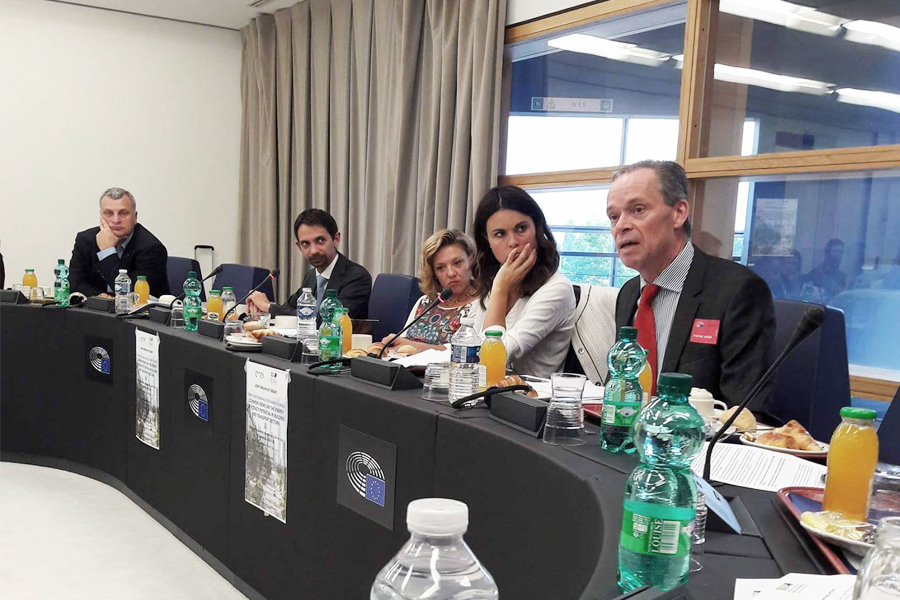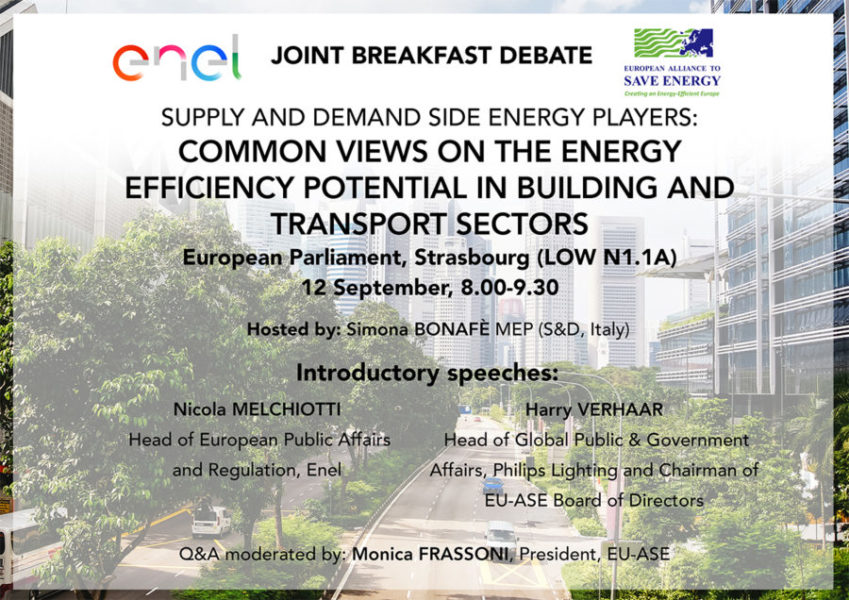Global energy players highlight common views on the energy efficiency potential in buildings and transport sector

12 September 2017, Strasbourg, European Parliament: Today senior business representatives from Italian multinational energy supplier ENEL and the European Alliance to Save Energy (EU-ASE) – a cross-sectorial organization of companies providing energy efficient technologies and services – presented to Member of the European Parliament (MEPs) their “Common Views” on energy efficiency. They outlined that buildings and transport have the highest cost-effective energy savings potential in the EU, respectively 61% and 41%.
The exploitation of synergies between buildings, transport and the electricity system as well as the integration of efficient technologies and services through the smart grids and the development of smart cities represent business opportunities that Europe should not miss.
Simona Bonafé (S&D, Italy) welcomed this constructive holistic approach by key business players and said: “Energy efficiency is one of the greatest tools for boosting economic growth, creating qualified jobs and safeguarding a sustainable environment. In the building and transport sector, there is a huge potential for innovation and investments. We must move forward with ambitious legislation to give a clear message to all stakeholders”.
In his introductory speech, Harry Verhaar, Head of Global Public & Government Affairs, Philips Lighting and Chairman of EUASE Board of Directors, said: “Additional measures must be taken in the framework of the EED/EPBD revisions to speed up building renovation and increase the current EU annual renovation rate to at least 3%. Renovation strategies should be developed within each specific national energy context by planning in terms of districts and entire energy systems, rather than focusing only on individual buildings to reap the full potential of high-efficiency energy supply solutions and maximize the energy saving potential of the entire energy chain”.
On behalf of ENEL, Nicola Melchiotti, Head of European Public Affairs and Regulation, added: “To make the entire system more efficient we need smart homes, smart buildings and smart cities. Buildings and transport show a great potential for energy efficiency and electrification is the answer: the more we electrify, the less energy we use. In the transport sector electric engines are 5 times more efficient than traditional ones and they can help solve other pressing problems, like the air pollution in our cities. We need to capture this opportunity”.





